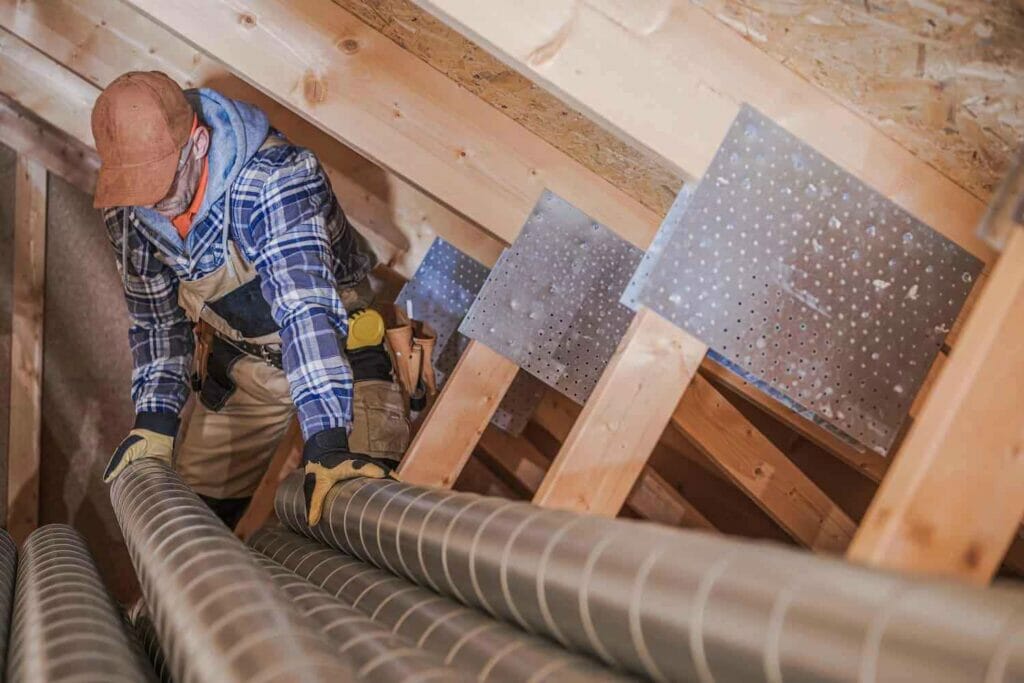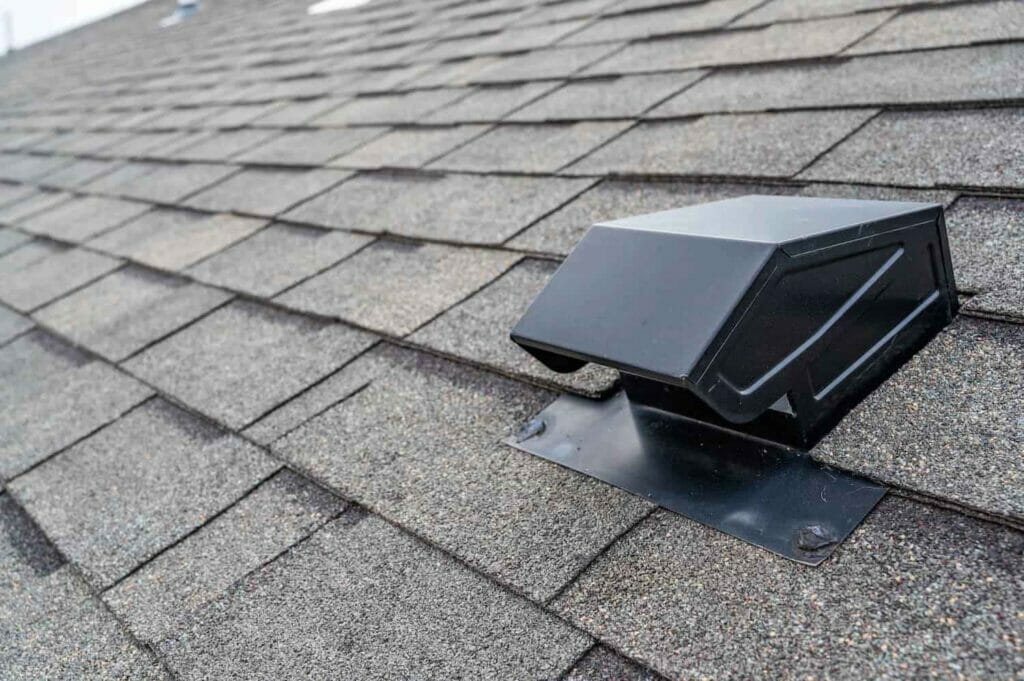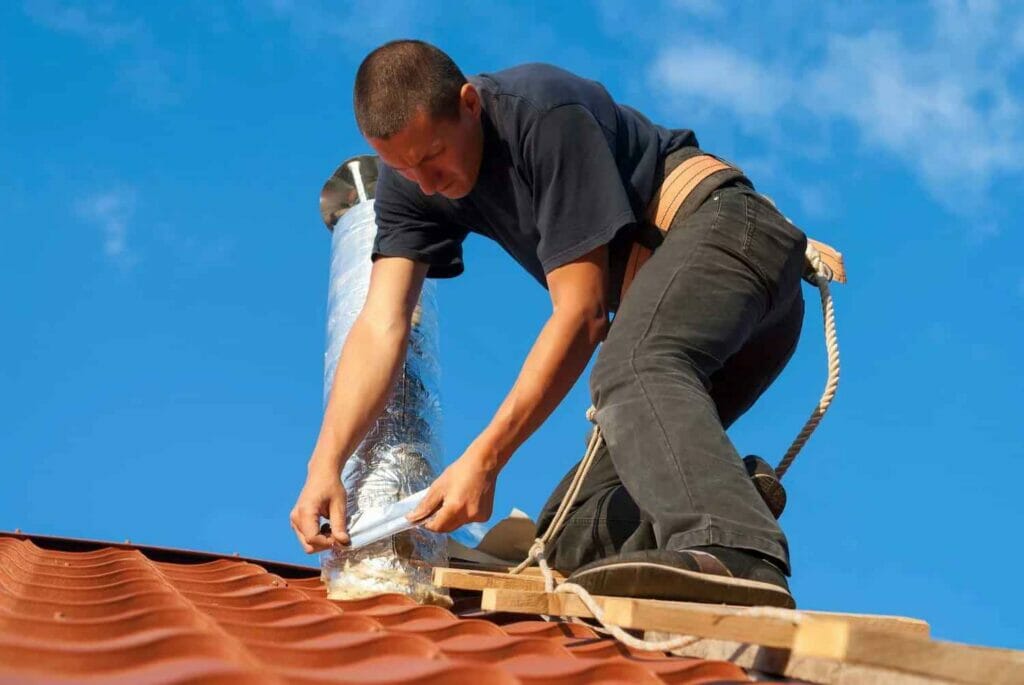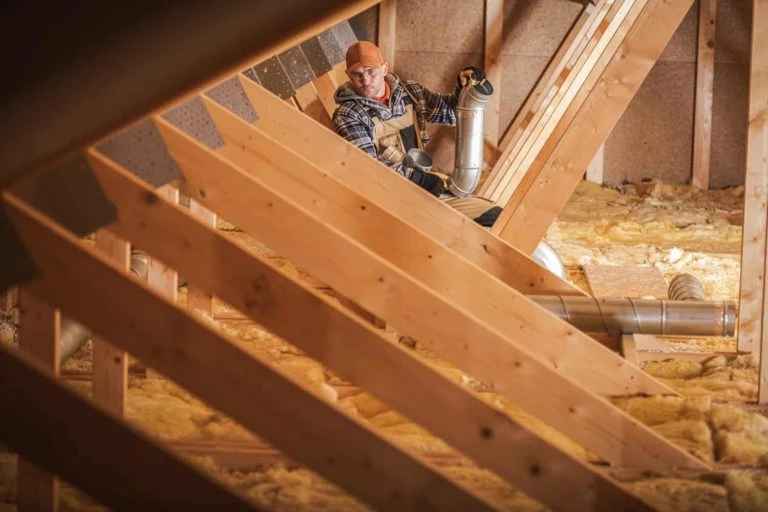Proper attic ventilation is a vital part of a safe and efficient home. Relying on poor attic ventilation that’s not up to local building codes can often be costly and lead to further issues with your roof and attic in the future.
Without adequate roof and attic ventilation in your home, you could be losing out on valuable energy, putting your family at risk for health problems, and exposing yourself to damage in your roof and attic.
Do you want to make your home run more efficiently while also saving money? Read on to learn more about the importance of roof and attic vents and find some helpful tips to improve your existing attic ventilation system below.

6 SIGNS OF POOR ATTIC VENTILATION
Utilizing the right roof vents and attic ventilation is vital for ensuring that everything in your home is working safely and correctly. Look out for some of the most unmistakable signs that your vent system is underperforming or entirely failing, such as:
MOLD OR MILDEW
When your roof lacks the right amount of vents, or your attic isn’t adequately vented altogether, you might find yourself running into issues with excessive moisture lingering in the air. Water damage on your roof or in your attic can cause harmful bacteria like mold and mildew to grow. These bacteria remain in the air, causing harm to human health while also leaving behind foul-smelling and unsightly stains.
Installing the proper amount of attic vents inside and a balanced system of roof vents on the exterior of your home can help minimize the likelihood you’ll have to deal with mold and mildew down the road.
NOTICEABLE TEMPERATURE CHANGES
Have you ever felt a significant difference between temperatures as you travel from room to room in your house? You might notice higher heat levels on the top floors and cooler air downstairs. This can be because you lack the proper vents to regulate the air throughout your home. Installing different kinds of vents will help combat these noticeable temperature changes quickly.
HIGH ENERGY BILLS
Have you started noticing increasingly expensive heating, cooling, and electricity bills as each month passes? This can often be because of issues with roof vents or attic ventilation. Failing attic vents can lead to air leaks in the attic area. This lets cool air flow outside, forcing your air conditioner to work double-time in the summer. With the heat rising into your attic during the winter months, warm air will also escape and cause further energy loss through the roof.
TRAPPED MOISTURE
Another common indicator of less-than-stellar ventilation is lingering moisture. Poor insulation or a lack of things like soffit vents, intake vents, exhaust vents, or ridge vents altogether can lead to trapped moisture buildup in your home, helping mold and mildew to grow. Installing the right kinds of vents in your home and on your roof can keep excessive amounts of moisture from creating even further issues for your house.
CONSISTENT ICE DAMS
Ice dams form when snow on your roof’s peak and surface melts and re-freezes along the roof ridge. Poor attic and roof ventilation can exacerbate ice dam formation, especially if hot air remains trapped inside your home’s attic. Good ventilation regulates the temperature of your roof, so snow won’t melt as quickly to create ice dams.
Specialized ice dam steaming equipment can also clear off your roof, but if ice damming is consistent, carefully examine your roof and attic ventilation. Ensuring that your attic is well ventilated will help avoid any further issues with ice dams.

PROPER ATTIC VENTILATION IS VITAL
Equipping your attic and roof with the right vents is a simple yet valuable way to ensure your attic and roof stay free from any water damage or other issues. Proper vent outfitting for your attic and roof can also provide a wide range of other great benefits, including:
- Upholding the integrity of your roof
- Maintaining your home’s temperature
- Keeping noxious fumes out of your home (bathroom, kitchen, furnace)
- Circulating fresh air while pulling stale air out
- Preventing animal or insect infestations
- Protecting items stored in your attic from mold or mildew
- Prolonging your roof’s lifespan
As you can see, the benefits of installing more vents in your attic are undeniable. Hiring a professional residential roofing company will help ensure you’re equipped with proper attic ventilation and can put it to good use.
TYPES OF ATTIC OR ROOF VENTS
There are several different aspects of attic ventilation to consider installing in order to improve your home’s energy efficiency, value, and overall performance. We dive even farther into the different kinds of attic and roof vents below:
- Soffit vents are installed under the eaves of your roof and extend into your home’s interior, helping you to provide adequate airflow and maintain a balanced ventilation system within your attic and home.
- Ridge vents are installed at the top intersection of your roof’s peak beneath shingles, so they’re virtually indistinguishable from the sidewalk. Ridge vents are types of exhaust vents that enable uniform ventilation throughout your attic.
- Intake vents allow cool air to enter your attic. You can install intake vents underneath soffit vents to help the colder air cycle through your home.
- Plumbing boots, better known as roof boots, are made from flexible materials to allow water and air to move freely between your roof and attic. This helps regulate air intake and minimize any lingering air in your attic. Whether they’re plastic vents or a more modern material, roof boots can benefit your home.
- Wind turbines are another popular kind of intake ventilation that relies on natural wind patterns to propel their blades and expel air from within your home.
- Exhaust vents are affordable roof ventilation options that look like little boxes along your roof’s edge. These are a more traditional kind of vent that lets warm air in your house move out through the exhaust vents through natural convection.
- Gable vents allow for passive ventilation within your roof and attic spaces. Just like when you open windows on opposite sides of a room, gable vents allow fresh air to flow freely in a perpendicular pattern and easily pass through the area.
There are many kinds of vents to consider when improving your home’s attic ventilation. Talk with your local roofing restoration company to determine which type of vent best suits your current budget and existing roofing style.

4 TIPS FOR IMPROVING YOUR ATTIC VENTILATION
Have you noticed more issues arising with your attic ventilation system recently? When your attic isn’t properly ventilated, you can be left with a wide range of problems with your roof, attic, and even your home’s interior.
Try out some of the helpful tips listed below to make your attic ventilation significantly better this season.
PRIORITIZE REGULAR ROOF MAINTENANCE
Keeping up with regular attic and roof maintenance throughout the year is a critical aspect of responsible homeownership. Inspect your roof vents and attic ventilation system to ensure that everything is working properly and no repairs are required. Stay vigilant and keep your eyes out for the common signs of inadequate attic ventilation we touched on earlier by assessing individual vents for any glaring issues.
INSTALL SOFFIT VENTS
As mentioned above, soffit vents allow air to enter your attic and the rest of your house and help regulate temperatures throughout the space. Soffit vents are one of the most vital parts of your home’s ventilation system, so installing soffit vents should be a top priority to improve venting and avoid other problems.
INSULATE YOUR ATTIC
Attic insulation is an essential piece of the puzzle when it comes to improving ventilation in your attic and roof. Use insulation baffles to hold up attic insulation along the perimeter of the attic area and on the attic ceiling after you install soffit vents. The insulation baffles will help the outside airflow from the exterior soffit vents into your attic more efficiently, keeping temperatures regulated year-round.
CLEAN THINGS UP
Another simple tip to improve your attic ventilation is cleaning up your attic floor and surrounding space. Take time to ensure your attic is neat and organized since boxes and other items left in disarray can lead to further attic ventilation issues, such as blocked soffit vents. When soffit vents are blocked (on top of already lacking proper attic ventilation), heat and moisture can cause even bigger problems.
Moist air and heat buildup paired with poor ventilation can impact the integrity of your roof shingles and lower your roof’s lifespan, or leave mold and mildew to destroy your attic. So what’s a reliable way to avoid these attic ventilation issues? Confirm that all attic vents and roof vents are working properly and free from any blockages by cleaning up your attic regularly. Although you might require the help of a professional to install roof vents and a better attic ventilation system, this is one quick fix for attic ventilation issues any homeowner can handle.

PUT YOUR TRUST IN THE PROFESSIONALS
While some people possess the confidence and abilities to complete DIY roof repairs themselves, that’s not the case for most average homeowners. Thus, the best way to complete roof repairs and achieve better attic ventilation is often to call on a team of roofing and ventilation experts like ours at MARS Roofing.
If you’re ready to improve your attic and roof ventilation, put your trust in a reliable team. Contact us to learn more about the benefits of proper attic ventilation and start your project today.



